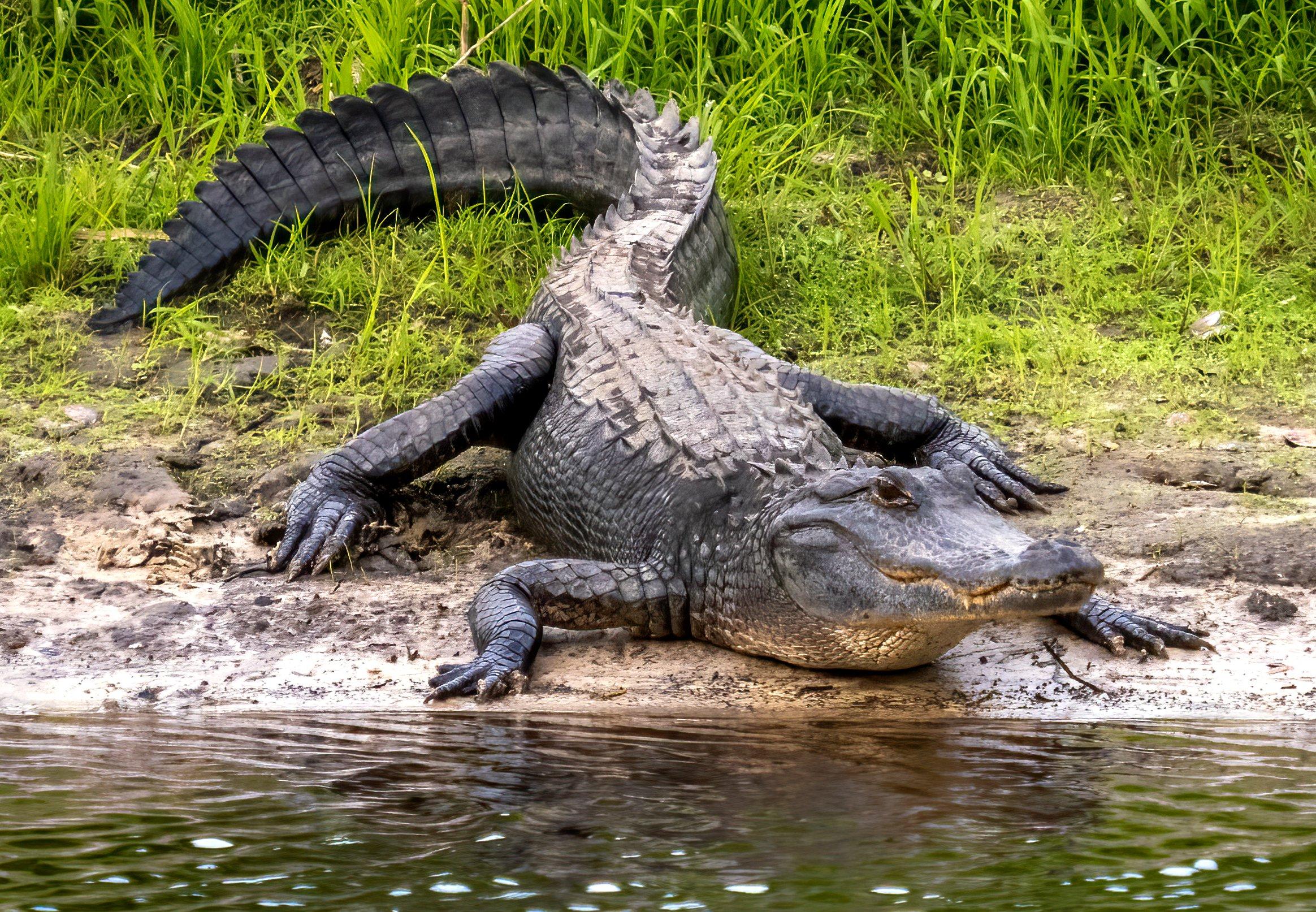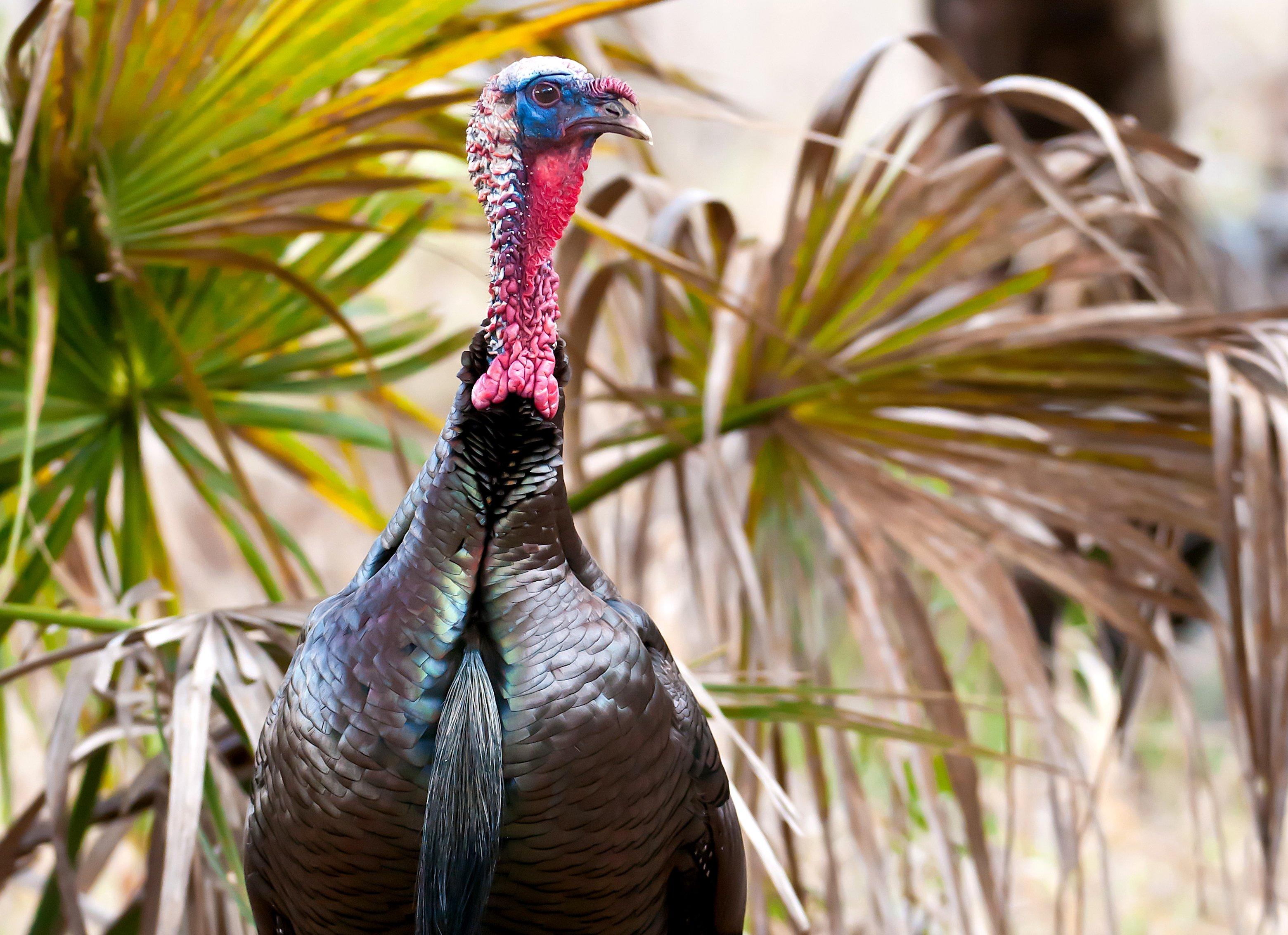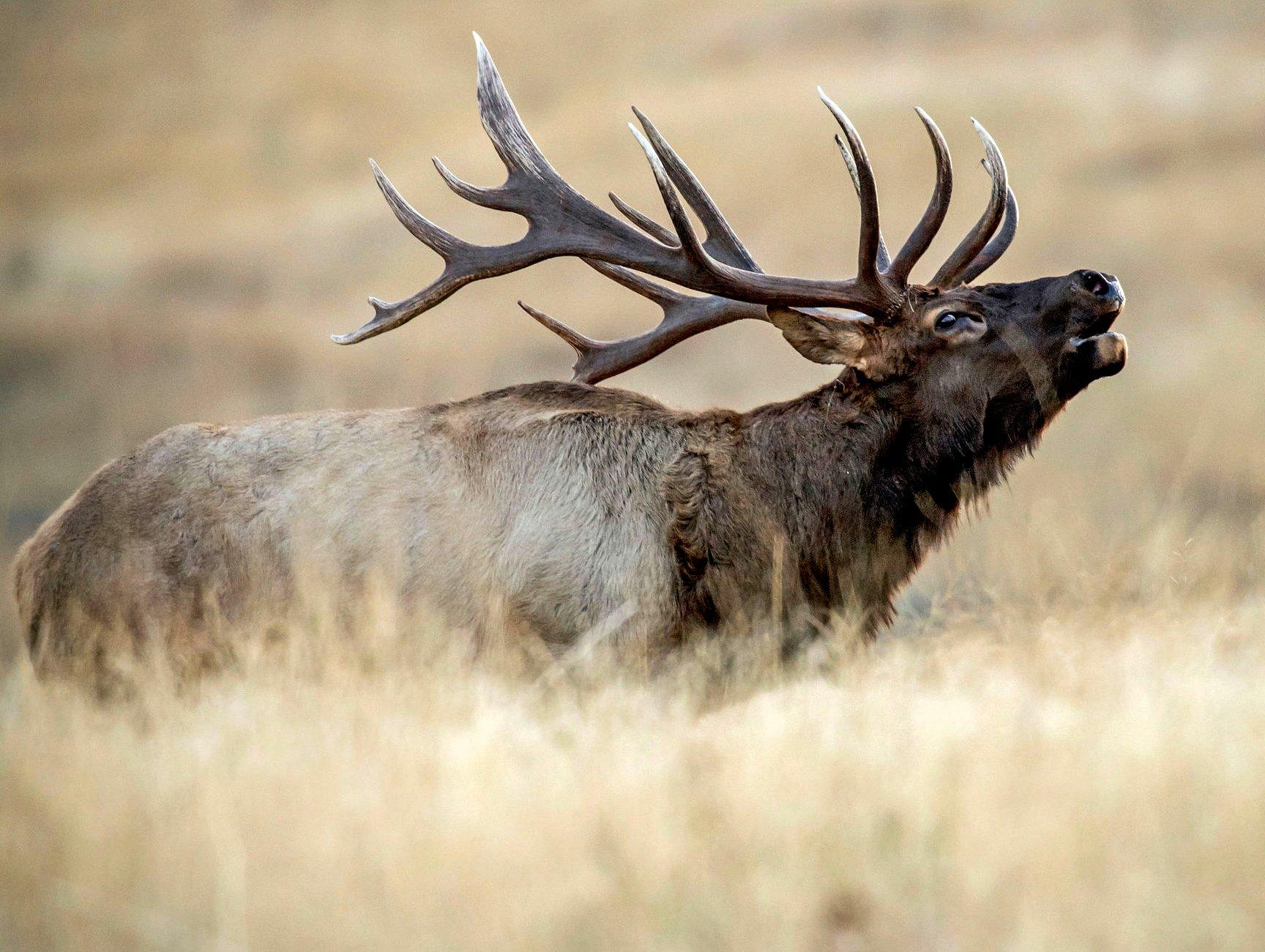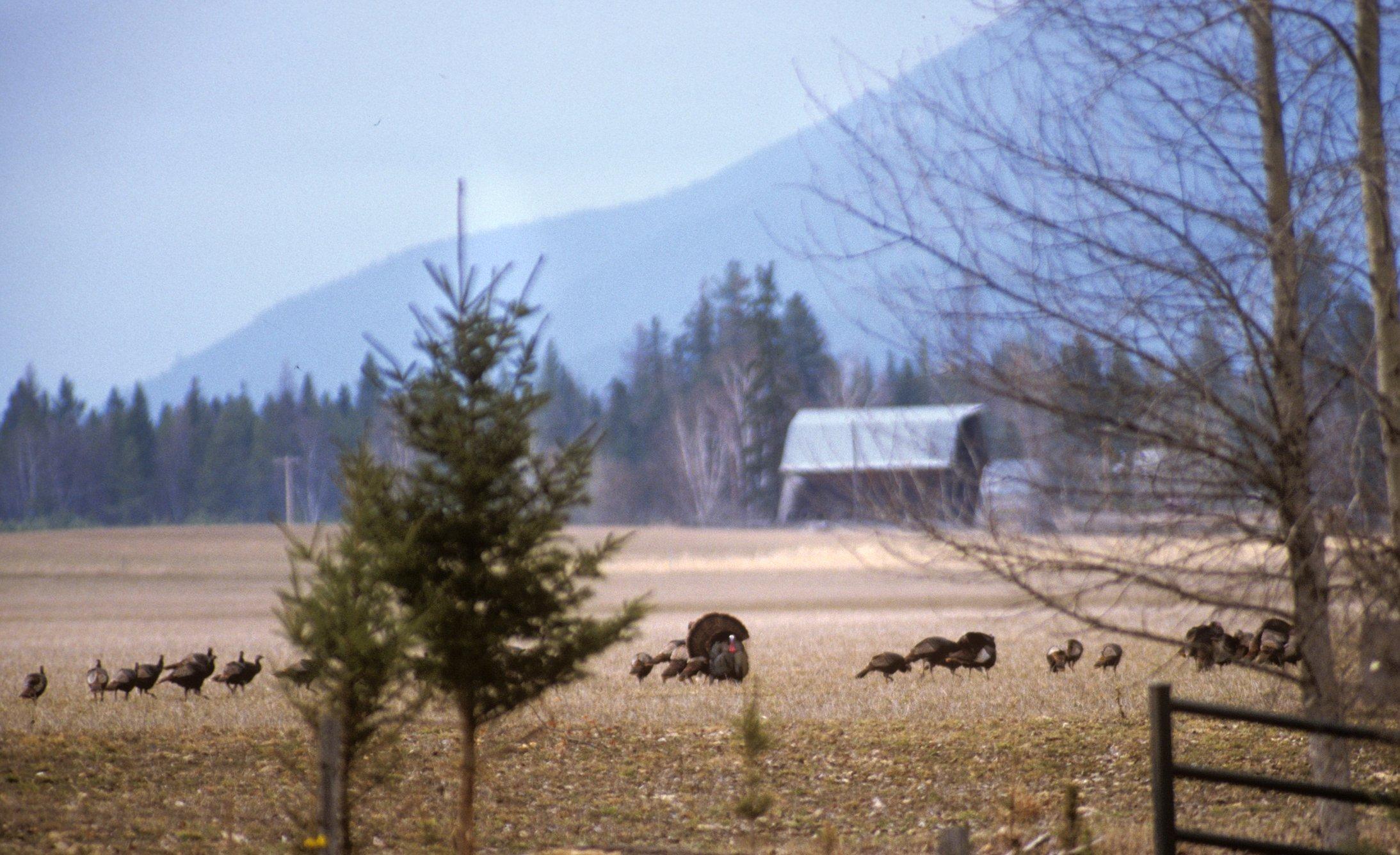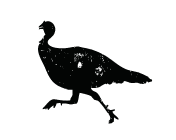These are the places where lonely gobblers go to find company, and you can identify them on a map if you know what you’re looking for
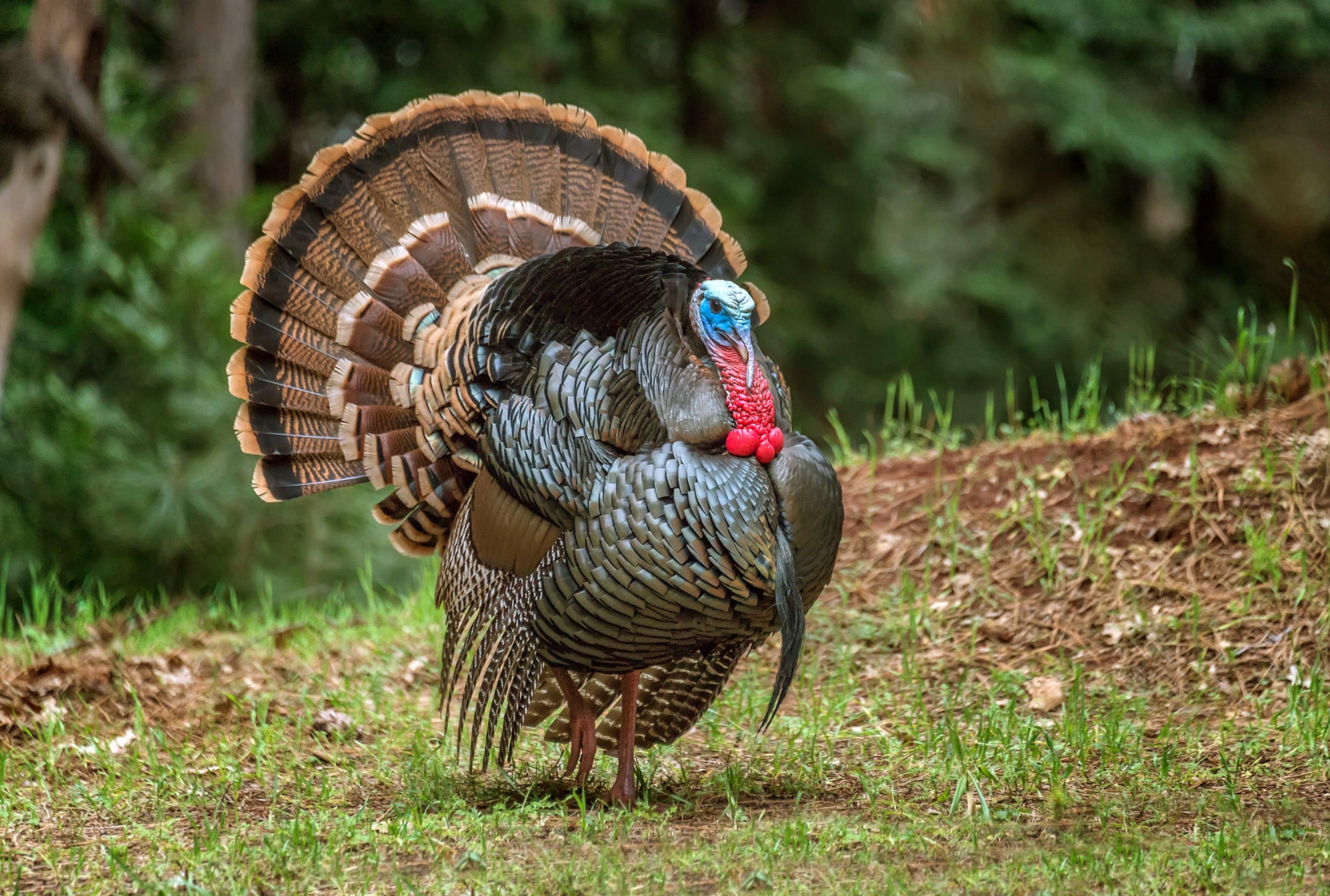
Finding a good strut zone can lead to late-season success. (Image by Shutterstock Professional)
There aren’t many casual late-season turkey hunters. The cool mornings and intense gobbling of the early season are over, and it can seem like the easy birds have been shot dead or spooked into silence. Overgrown fields make spotting strutters difficult, and the poison ivy, ticks, and chiggers are reaching their full summer potential. This time of year, it’s as common to go hunting and not hear a gobbler as it is to hear one.
But the truly afflicted keep after it, partly because the season will be over soon and we can barely stand the thought of that. And partly because there can be real moments of turkey hunting glory in the late season. Find the right bird, in the right spot, and he might come to you without any hint of playing the henned-up and hung-up games of a few weeks ago. One of the best places to find such a bird is in a good strut zone.
DEFINING STRUT ZONES
Gobblers strut constantly in spring, especially in the presence of hens, so you can’t necessarily head to a pasture corner where you saw a tom fanned out a few weeks ago and assume you’re in the strut zone. No, true strut zones are the places where gobblers purposely go to gobble, strut, and attempt to attract the attention of hens. Regardless of where you live or what subspecies of turkey you’re hunting, they share some simple geographical features that are easy to see, too.
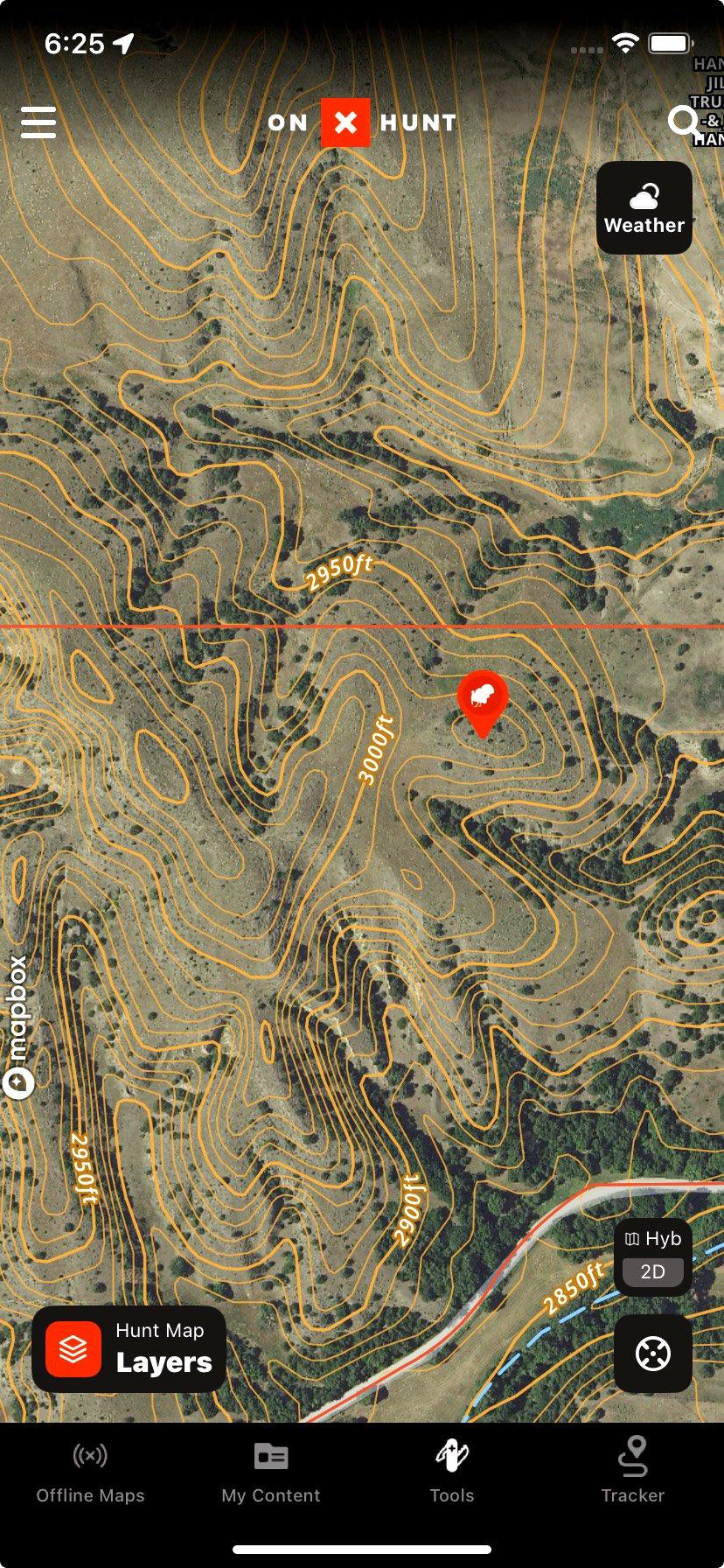
The author shares an onX screenshot of a strut zone where he killed a bird in western Merriam’s country. (Image by Will Brantley)
Look at your hunting area from a landscape level on a map, being sure the topographical lines feature is turned on. I use onX Hunt, but any mapping tool that displays topo lines will work. Note on the map where turkeys usually roost, where they feed in the mornings and evenings, and where they go to loaf in the shade when it’s hot. Then note the highest, sharpest plateau in the area relative to all of that — the place where you’d perhaps go to get better cell service. You should see nice, tight lines indicating a sharp rise in elevation, but with a defined flat spot on the top. If you think back, you’ve probably heard a turkey gobble from there before. Turkeys use strut zones all season, but especially so during gobbling peaks in the early and late season.
Don’t Miss: The Art of Asking Permission to Turkey Hunt
In the eastern hardwoods, a strut zone will often be on the end of a hardwood ridge, overlooking a creek bottom. Out in Nebraska, it could be up on the top of a sandhill. In Texas a few weeks ago, I saw a pair of gobblers using a pond dam — the biggest hill in the immediate area — as a strut zone. These aren’t places that one gobbler chooses at random. Instead, strut zones are the little chunks of real estate that generations of gobblers will use for displaying. For turkey hunters, knowing where they’re located is strategic gold.
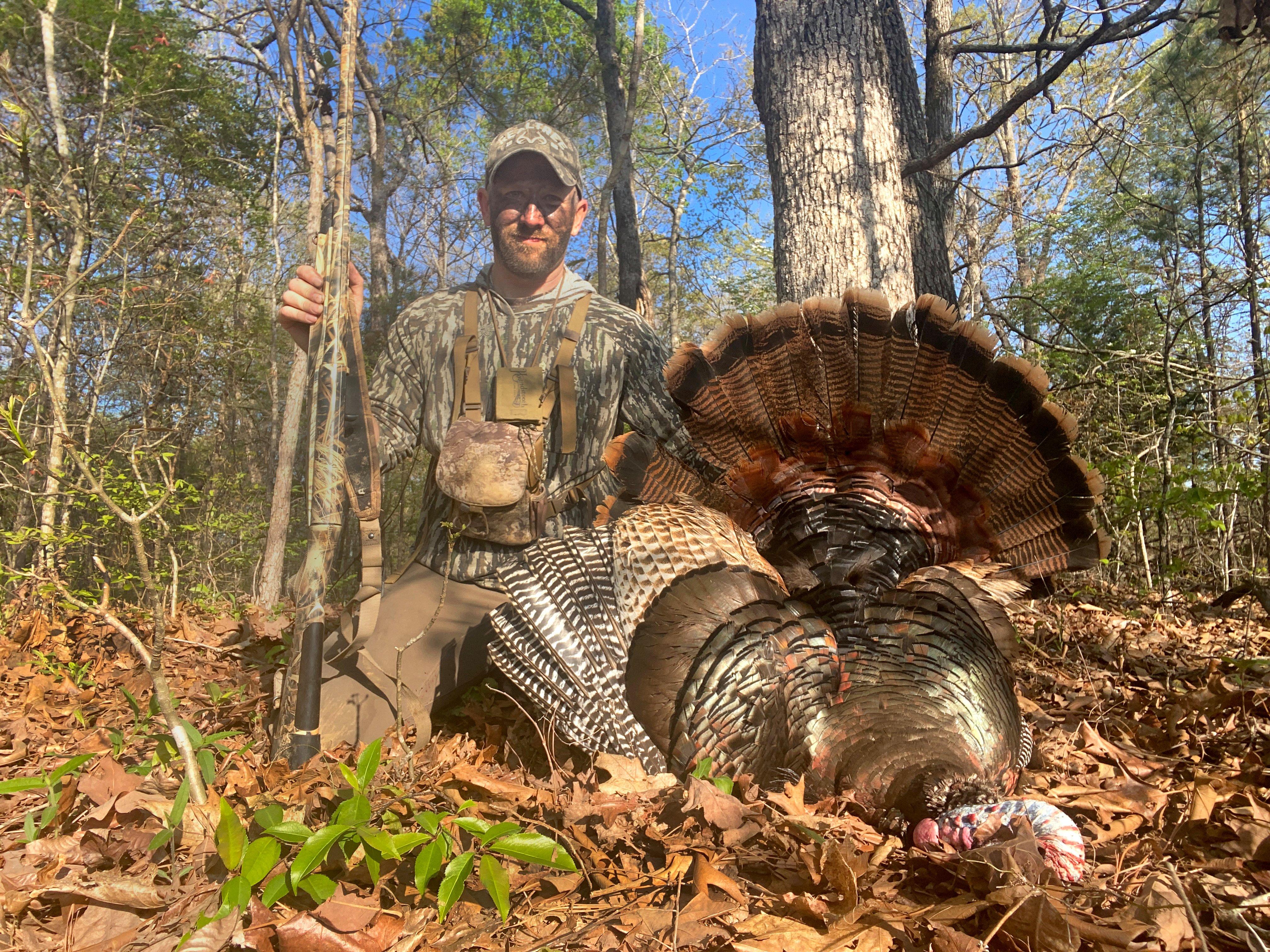
The author caught this bird by himself and acting lonesome in a strut zone during a mid-morning hunt in Kentucky. (Image by Will Brantley)
Gobblers won’t come to strut zones every day. Mid-season, when birds are henned up, you might sit in a strut zone for days without seeing a turkey of any sort. But when solo gobblers get lonely, as is often the case a couple of hours into a late-season morning, strut zones are where they’ll go to gobble and attract hens. That’s a virtual guarantee.
STRUT ZONE STRATEGY
You won’t often see a gobbler strutting in a blackberry thicket or pile of deadfalls. Good strut zones are open on top, allowing a gobbler to be heard and seen from a long way, but also to detect danger in an instant. Most of the time, a gobbler will position himself slightly on the downhill side of the plateau, allowing him to see the hill below him, but also keep an eye on the ridge behind him. The surest way to kill a turkey in a strut zone is to be set up and waiting before he gets there. But this can require extreme patience because, again, gobblers don’t go to strut zones every day. Still, in the late season in particular, if nothing else is happening, these are my first stops to sit and blind call.
Most of the time, though, I end up in a strut zone because I’ve followed a gobbling bird there. Maybe it’s been a quiet morning and then, at 7:30, a turkey sounds off in the distance, and gradually works himself in a gobbling frenzy. Sound familiar?
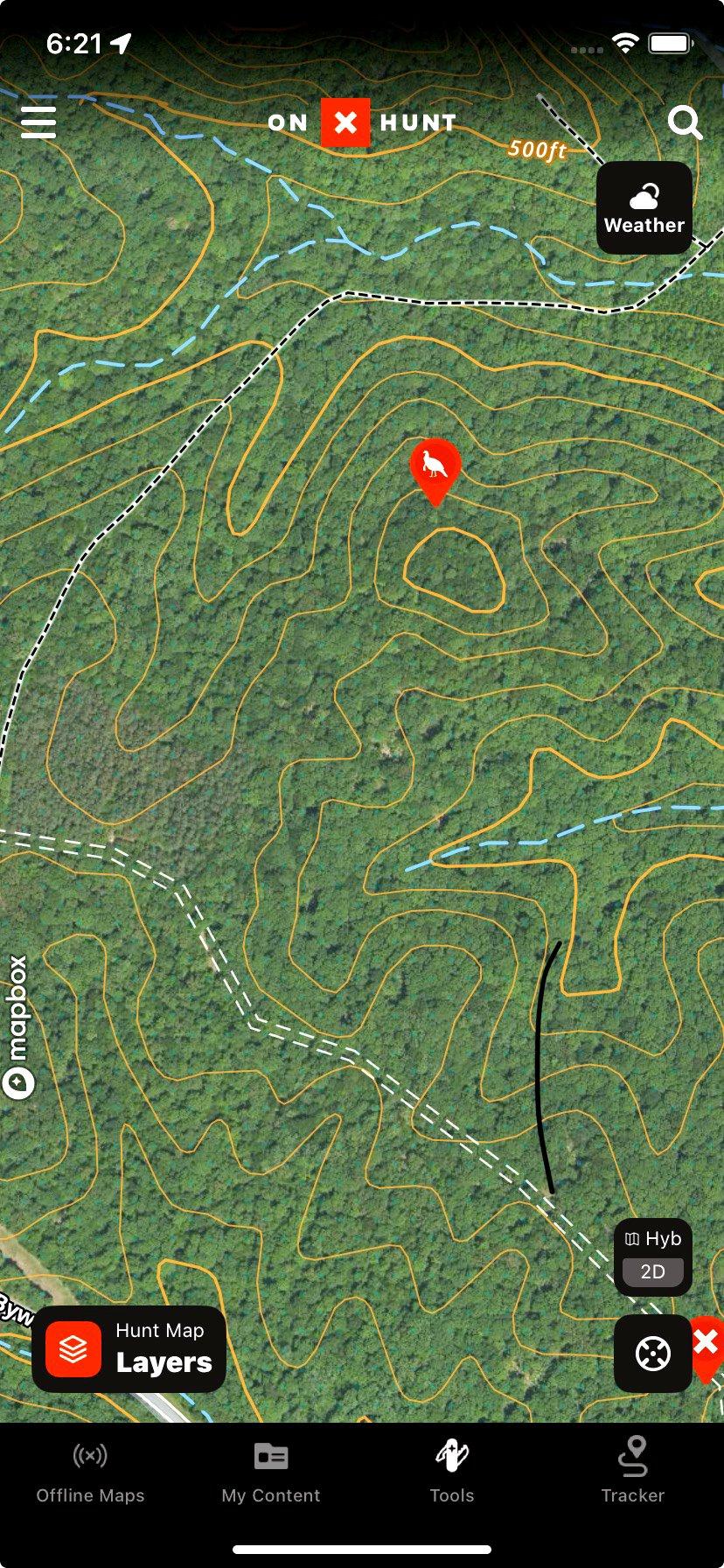
This onX screen shot shows a strut zone on a hardwood ridge in the Southeast where the author tagged a bird. ( Image by Will Brantley)
Before rushing right at him, check your map. Nine times out of 10, he’s standing on the plateau of a ridge, just like I’ve described. Coming at him from below almost never works. Instead, you need to approach the gobbler from his elevation level, or, even better, from slightly above him. Be strategic, go for broke, and crawl in as close as you dare. This is the late season, after all, so you don’t have much to lose. If I can get within 70 yards of a turkey gobbling in a strut zone before making the first yelps, I’ll do it. If possible, position yourself so you’re at least 15 yards from the break of the hill (25 or 30 is better), and be able to see downhill, especially. This is no place to be fiddling with a decoy, so leave them in the truck.
Don’t Miss: The 28 Gauge Is Taking Over the Turkey Woods
When you’re set up and ready, yelp softly, almost like a tree yelp. I like a double-reed mouth call for this type of close-in work. A slate call sounds great in this situation, too, but be careful with your hand movement. Sometimes, a hot gobbler will fire back immediately. But almost as often, those first hen yelps will seem to shut the gobbling down. Don’t panic, as this is just nature at work. When a gobbler thinks a hen is nearby, he’ll often stop gobbling and just strut and drum. Hens can hear drumming easily, but it’s not as obvious to us. It’s a low-pitched huuummmm that you can seem to feel almost as much as hear. If you can hear the spit sound ahead of the drumming, know that the gobbler is in gun range or very close to it.
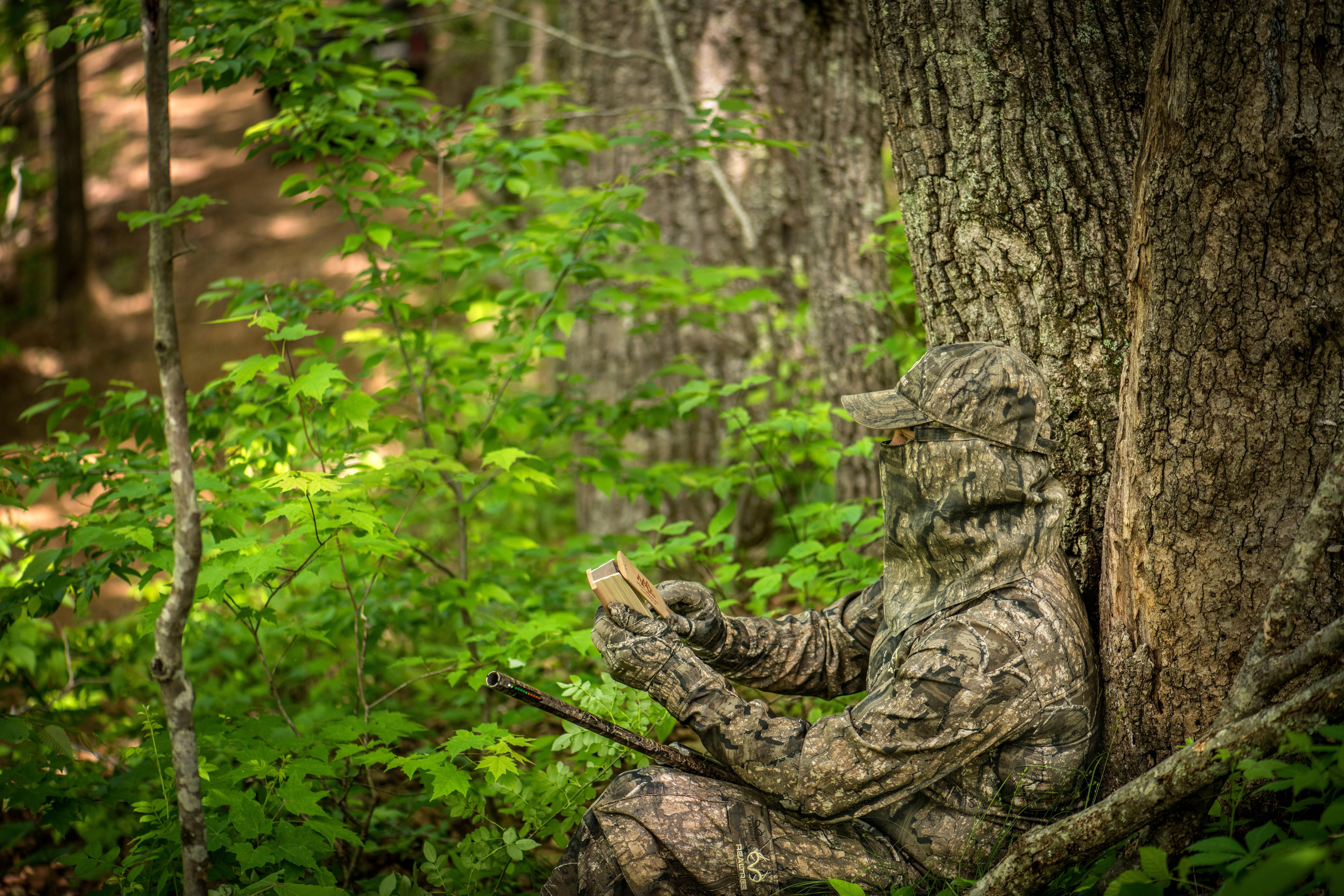
To kill a turkey in the strut zone, try to set up and be waiting before he gets there. A few soft yelps can entice him in. (Image by Bill Konway)
Often, a turkey will drum for a bit, and then maybe fire off another gobble. I’ll hit him with another excited yelp or two when he does, and maybe scratch in the leaves, and then I’m going silent. Sometimes he’ll start gobbling hard, and the more he gobbles, the more urgent he’s feeling. Be patient, and wait for him to break. It might take 10 minutes, or an hour, but at this point in the season, that gobbler knows his chances to breed are ending for the year. If you’re close to him, and he’s answered you, chances are very high that he’ll walk right into shotgun range, fanned out with a brilliant white head tucked tight against his chest. Shoot him when you can, and then take a moment to appreciate it all. It’s the late season, and you won’t see this again until next year.






